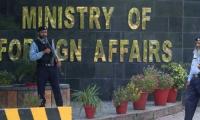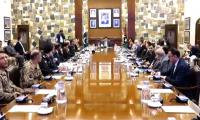On this day 15 years ago, December 27, 2007, former prime minister Benazir Bhutto was assassinated minutes after she addressed a huge public meeting at Liaquat Bagh, Rawalpindi, which was supposed to be her last public meeting before the general election but turned out to be her last as she was martyred almost in the same manner as Pakistan’s first Prime Minister Liaquat Ali Khan on the same venue.
The three things they had in common were that they were both prime ministers, that they were killed in the same place, and that the conspiracy to kill them is still a mystery to this day.
Benazir was under constant threat since she arrived after ending her exile on October 18, 2007, after disregarding former president Pervez Musharraf’s warning that she should not come before polls and that if she did, he couldn’t guarantee her safety. Yet, she returned and survived two massive suicide attacks on her procession, which resulted in the deaths of 150 people, mostly PPP workers.
Days after the attacks, she wrote to the relevant authorities and the police about people she suspected of being involved in the attacks and threatening her life. These included former army chief Gen (retd) Pervez Musharraf, former ISI chief, the late Gen Hameed Gul, Musharraf’s close aide Brig (retd) Ejaz Shah, and the then Punjab chief minister Ch Pervaiz Elahi.
Benazir returned to Dubai days after Musharraf imposed an emergency on November 3 and resumed her election campaign. She survived two more attacks as the attackers were caught, including one in Peshawar. The suspects were arrested as they were about to attack.
Her security team was changed after the October 18 attack, and instead of former home minister Dr. Zulfiqar Mirza, it was handed over to former interior minister Rehman Malik.
On a fatal day, she met the then-Afghan president, Hamid Karzai, and the latter warned her about the conspiracy to kill her. Yet she decided to go ahead with her plan, and besides police and intelligence agencies, her security team was supposed to protect her. At Liaquat Bagh, a severe security breach occurred when the gate that was kept for her entry and exit and that under the security plan had to be cleared was not cleared, something that allowed the attackers to go inside and near her car.
As she was coming down after the public meeting, there were hardly any security people on her right and left. She, along with Naheed Khan and her husband, Safdar Abbasi, Makhdoom Amin Faheem, was about to leave. She called PMLN leader Nawaz Sharif after sitting in the car to inquire about the firing incident on his procession.
Serious security lapses occurred one after another and exposed Rehman Malik’s security plan. The area was not cleared as it should have been, she should not have been allowed to come on the car’s roof, and her security team did not cover her or her vehicle. Benazir was shot and later died in the hospital.
The investigation that followed the case raised many questions, and none of the people Benazir herself pointed out after the October 18 attack were questioned by the PPP government from 2008 to 2013. The fact that BB’s mobile phones were allegedly kept by Rehman Malik was a key piece of evidence, and according to a senior police officer and member of the JIT in the case of Rao Anwar, “till this day I never know why her Blackberry was never handed over to the JIT for two years and kept by Rehman Mali,” he said, adding that he did not sign the JIT for this very reason.
The question of why Benazir Bhutto was killed still needs to be answered. Since her first return to Pakistan in 1986, she had never been accepted by the powers that be. Former ISI chief Gen Hameed Gul created obstacles to her victory in the 1988 elections by forming the IJI, a right-wing alliance, and her victory was cut short. She was then forced to agree on conditional power. Still, even then, within nine months, a vote of no-confidence was moved against her, allegedly at the behest of former president Ghulam Ishaq Khan and some other non-political players, and finally, she was sacked.
In 1990, her party was further curtailed in the elections, and she blamed the establishment for being responsible for all this. Years later, the Asghar Khan case established that the 1990 elections were rigged and that money was distributed among BB’s opponents.
Even in 1993, her government was not allowed to complete her term, and within three years, her president Farooq Leghari removed her.
“I am not acceptable to them from day one because I am a woman,” Benazir told me, “and they first campaigned against me on the pretext that women cannot be heads of government or heads of state. It’s the mindset that never accepted me despite people’s acceptance,” she said; she constantly faced this problem.
“There were indeed people within the army who had apprehensions about her being the daughter of Zulfiqar Ali Bhutto that she might take revenge, but when I met her in 1988, I found her to be the most patriotic and had no such feeling,” the late Gen Gul once told me in an interview.
Benazir Bhutto had a firm stand against extremism, and some believe she was killed by the Taliban, even if otherwise an investigation had blamed TTP leader Baitullah Masood. But it is also a fact that, unlike the TTP’s reaction, Masood denied his involvement in the case.
After the assassination of Benazir Bhutto, the courageous daughter of a dynamic leader and former prime minister Zulfiqar Ali Bhutto, the political dynamics of Pakistan changed, and her party, the Pakistan Peoples’ Party (PPP), could not recover since then and struggled to become “Charoan suboan ki zanjeer” again.
Benazir Bhutto is a classic example of why, at times, mere popularity can’t guarantee your absolute majority or even bring you power.
The writer is a columnist and analyst for GEO, The News, and Jang.
Twitter: @MazharAbbasGEO
A bench headed by Justice Wiqar Ahmad issued these directives while hearing multiple petitions
Authorities warn Afghans to leave before launch of crackdown in Landikotal against those lacking legal documents
Protesters began pelting stones at police, resulting in injuries to DSP Aslam Jagirani and one police constable
"Why did PPP not speak up when Irsa issued a certificate of water availability?” asks Qureshi
Next hearing will be held in Adiala Jail, for which court has also issued notices to prosecution witnesses
FIA issues formal notice to Babar on March 28, directing him to join investigation







